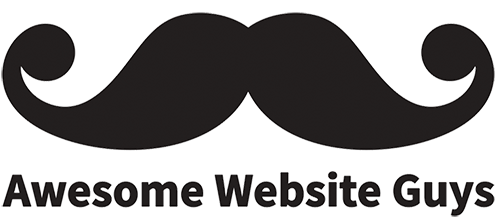Known as one of the biggest domain name and hosting companies, GoDaddy launched a new website builder service in 2019 that includes hosting. GoDaddy Website Builder makes it easy to build a simple site using pre-built templates and a drag and drop page editor, similar to Boxmode. Users can create everything from a food blog to a small online store in little time. While this domain powerhouse offers a simple approach to building a website, its lack of site customization, SEO functionality, and e-commerce options does not make it a scalable option for growing businesses. Therefore, I will discuss these primary factors preventing GoDaddy Website Builder from being a sustainable, scalable option and alternatives to consider.

Site Customization
GoDaddy Website Builder offers a small amount of pre-built templates for each industry category, such as real-estate or beauty. While this makes it easy to choose something quickly, it can become frustrating when you need to build a personalized website that doesn’t look generic. GoDaddy doesn’t allow users access to their website’s code, which prevents the possibility of adding custom code. Indeed, the design customization options are rather limited compared to a top CMS (Content Management System) like WordPress.org that allows users to fully customize their site to meet their needs.
To customize your GoDaddy site, you need to choose a template, which can be changed later on with your content intact. While this is helpful, the freedom to customize your template is lacking. For example, you can only select one font type and color scheme for your website, which limits your design options. Your chosen template determines how much each site element can be positioned, which means you can’t freely drag and drop items. When you are building a business site with a specific vision and brand in mind, it can be frustrating when you are unable to place elements in specific locations on your site.
Aside from design customizations, GoDaddy only allows sites to have a simple site structure. Specifically, you cannot add sub-levels on your site’s navigation menu. If you have a growing business with dozens or hundreds of site pages, this will quickly become a messy navigation menu with all of your page links listed on the top level. However, WordPress.org allows you the freedom to build a site that meets your needs perfectly, even if that includes a complex site structure for a 200-page e-commerce site.
While GoDaddy’s lack of app or plugin directory makes it easier to manage a site, it also makes it more difficult to integrate applications necessary to meet a site’s unique needs. For example, an e-commerce store may need a live chat application, which isn’t available on this platform. Luckily, top sites such as WordPress offer nearly 57,000 plugins (paid and free) to ensure users find what they need, including live chat plugins. Additionally, WordPress allows users to upload and install third-party or custom-built plugins to maximize their site’s customization capabilities.
SEO Functionality
Aside from building a user-friendly, responsive website, it is crucial to optimize your site with SEO. Search engine optimization is the process of improving your site, which helps it rank higher for relevant searches and provides useful, accessible content for users. Despite the importance of SEO, GoDaddy only offers SEO tools for users with premium plans, rather than to all their paid users. Premium users receive SEO tools to add metadata (i.e. meta titles and meta descriptions), receive keyword suggestions, and track their Google rankings. Indeed, this is a good start for SEO, but is limited by what GoDaddy offers users. With access to thousands of plugins, WordPress offers users numerous options for how to optimize their sites as they can choose from SEO plugins or hire SEO experts to boost their site’s rankings to the top.
E-Commerce
GoDaddy offers an e-commerce plan for users that need a simple online store. This platform’s store manager is fairly basic in what it can do, such as accept payments through various payment gateways, add tax and shipping rates, and set up text and email notifications for customers. Users can set up native product reviews, where customers post reviews from their GoDaddy site, rather than from a third-party application. While these features are good for small stores, this platform is not suitable for scaling your site. Indeed, GoDaddy only allows users to add a maximum of 100 different product variations to their e-commerce site. Each product can have three versions (i.e. color, size, and material). If you have a medium to large site that will be selling more products than their product cap allows, consider a reputable e-commerce plugin such as WooCommerce available on WordPress. This plugin provides full customization with setting up your store, adding your products, and additional features to enhance your store’s functionality.
An Alternative to GoDaddy
While GoDaddy is a good choice for setting up a basic site quickly and easily, it is not the best option for growing businesses with specific needs. GoDaddy is tempting due to it being easy to use and has few design options to consider, but this will not be helpful for businesses that require a personalized site with complex content and feature needs. If you have a growing business, consider a popular CMS that powers over 35 percent of today’s websites. WordPress lets you take complete control over every detail of your site from the design, functionality, site structure, and even hosting provider. You can either choose from over seven thousand themes or let a WordPress expert work their magic and bring your site visions to life.
Valerie Hare
Valerie is a Content Strategist at Awesome Website Guys. She has a background in web development and writing. When not working, she enjoys going to the beach, walking her dog, and chilling with her family.

